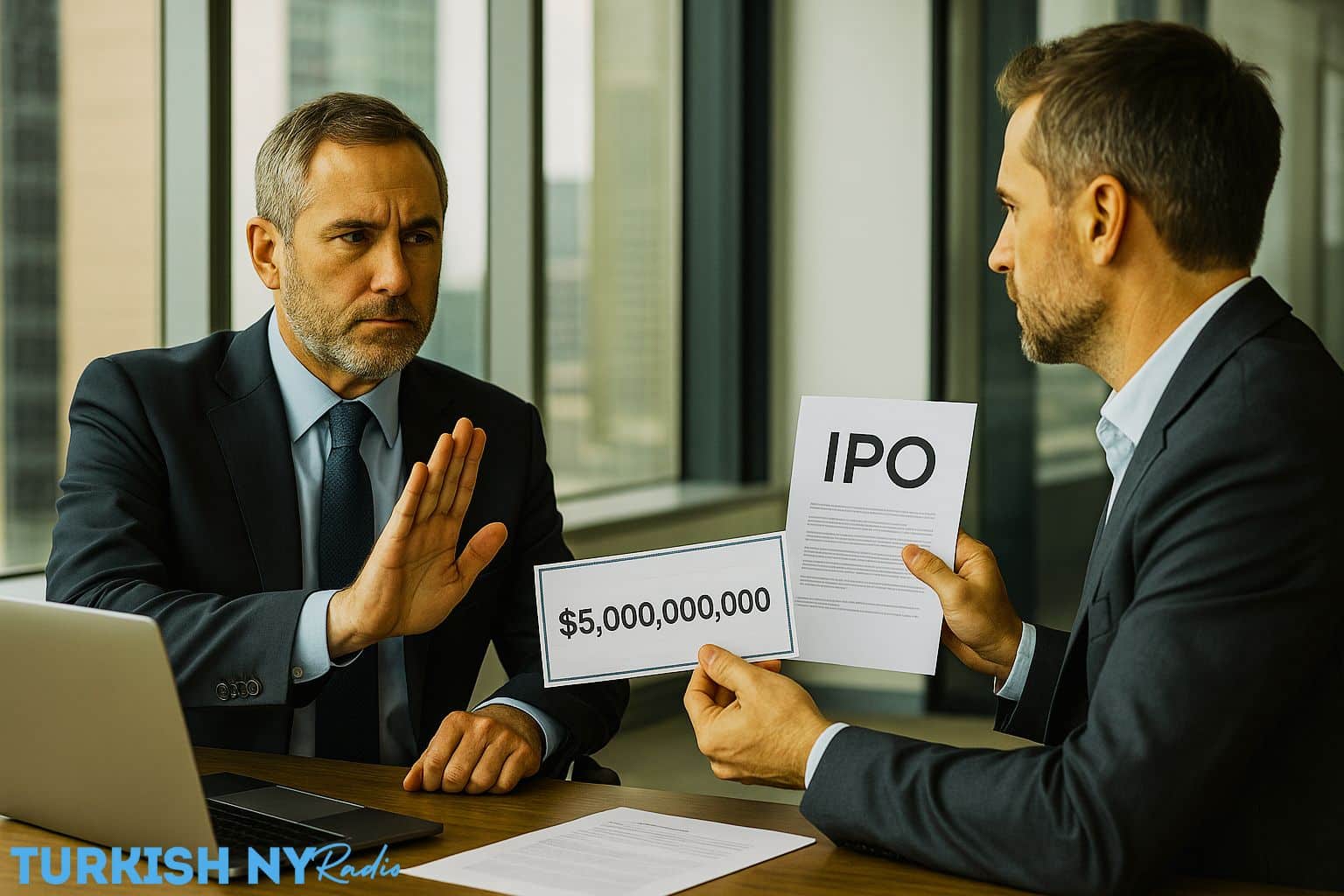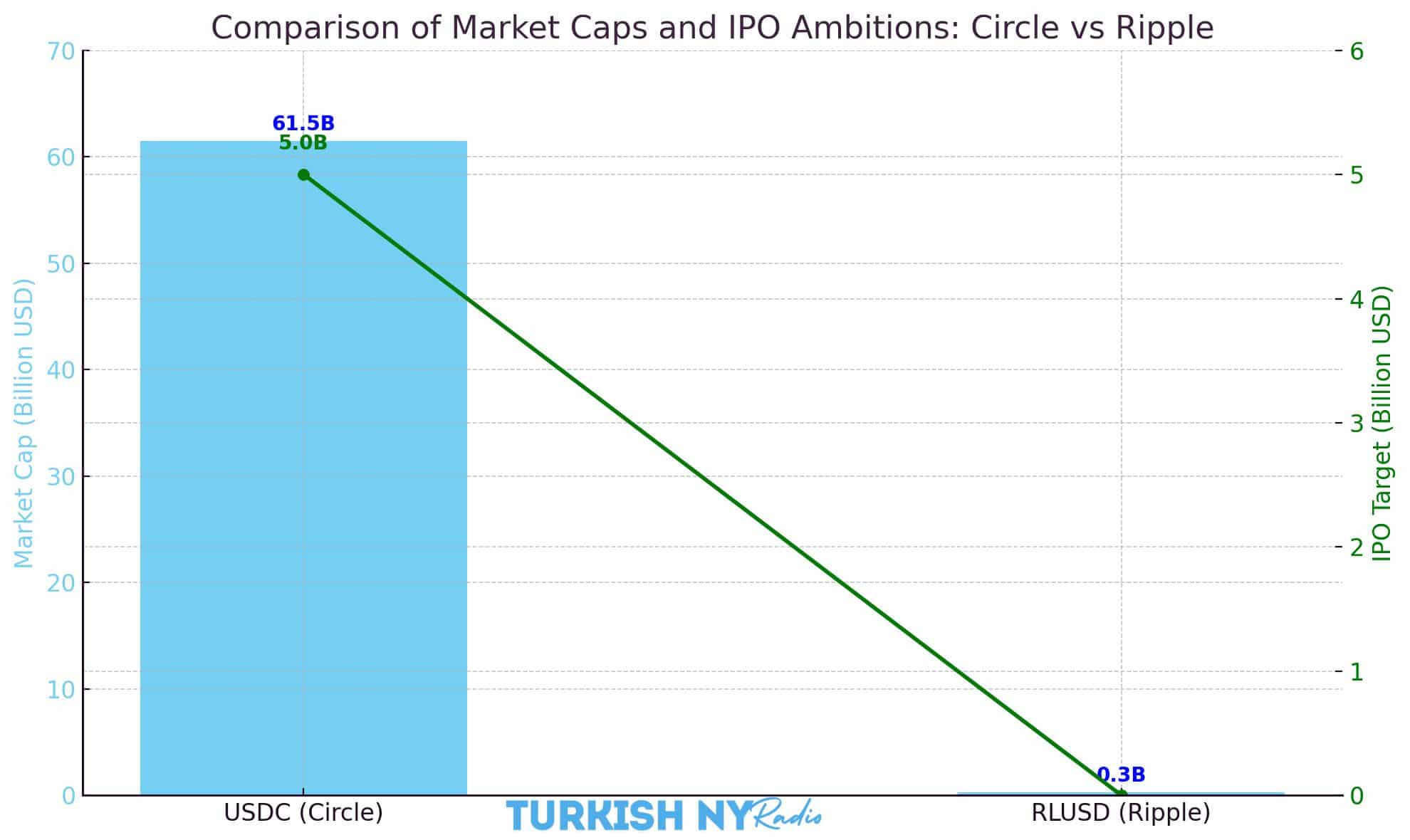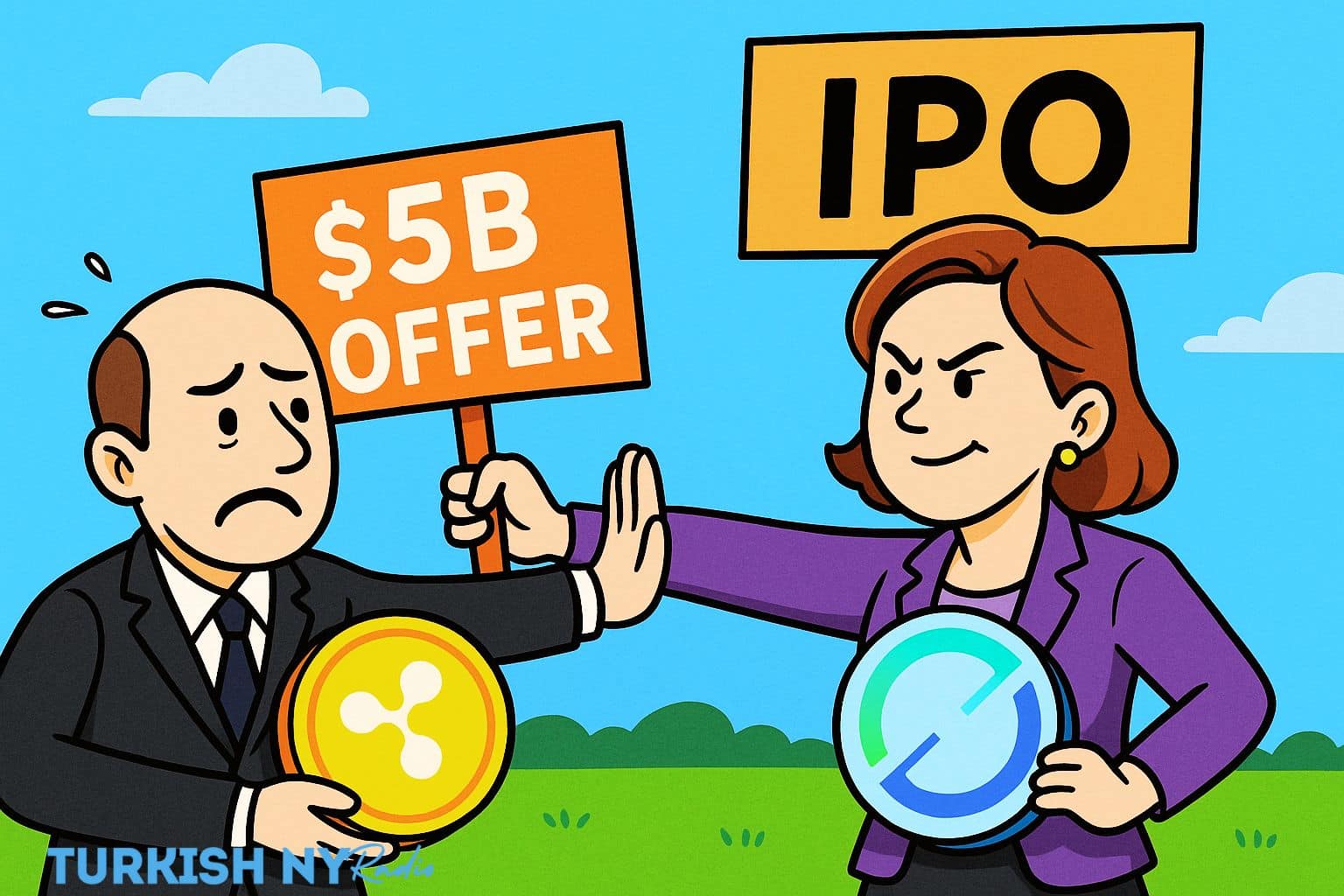A proposed takeover by Ripple of Circle Internet Financial, the company behind USD Coin (USDC), has reportedly been rejected. Circle insiders who were familiar with the offer believed it was too low, valuing the company somewhere between $4 billion and $5 billion. Ripple has indefinitely pursued the acquisition; however, they have not confirmed a new bid.
Circle is still gunning for the IPO it formally filed to go through earlier this month. The company is seeking a valuation in the range of $4 billion to $5 billion and plans to list on the New York Stock Exchange under the ticker “CRCL.” Market participants see Circle’s refusal of Ripple’s offer as a play by management to maintain control in a pivotal growth stage.
A Circle spokeswoman declined to comment for this article
“due to regulatory requirements and quiet period restrictions.”
Ripple has also not publicly commented on the deal.
The Showdown: RLUSD vs USDC
Ripple rolled out its RLUSD stablecoin in December 2024. Despite being a late entrant, RLUSD is valued at about $317 million, which ranks it as the 12th-largest stablecoin by market capitalization. It runs on the XRP Ledger and seeks to address the liquidity problems that institutions face in cross-border payments.
By contrast, Circle’s USDC is still dominant, with a market cap of nearly $61.5 billion. USDC is 100% backed by U.S. dollar reserves and is available on prominent payment networks, DeFi protocols, and centralized exchanges.

Current Stablecoin Market Comparison:
| Stablecoin | Market Cap (USD) | Launch Year | Blockchain(s) Supported |
| USDC | $61.5 Billion | 2018 | Ethereum, Solana, Base |
| RLUSD | $317 Million | 2024 | XRP Ledger |
RLUSD Prospects and Price Stability
RLUSD is a fiat-backed stablecoin that is pegged 1:1 to the U.S. dollar value and will serve as a way to secure value and protect it from market volatility. And, unlike most other regulated stablecoins, it regularly trades at or at least near $1.00.
Yet, growing levy volume means mounting usage, especially by institutions using Ripple’s blockchain for instant settlements. RLUSD is native to the XRP Ledger, which enables fast and inexpensive transactions, making it suited to cross-border payments. Its expanding circulation also comes against the backdrop of Ripple’s own efforts to rival established players, including USDC and USDT.
RLUSD Forecast Table (2025–2030):
| Year | Projected Circulating Supply | Projected Market Cap |
| 2025 | 500 Million | $500 Million |
| 2026 | 900 Million | $900 Million |
| 2027 | 1.3 Billion | $1.3 Billion |
| 2028 | 2 Billion | $2 Billion |
| 2029 | 3 Billion | $3 Billion |
| 2030 | 4 Billion | $4 Billion |
These estimates are a big assumption on Ripple’s enterprise adoption strategy, specifically working with a large number of financial institutions on cross-border payments.
Ripple Expanding Network as Acquisition Falls Through
Ripple has been seeking larger financial infrastructure solutions. In April 2025, the company completed the purchase of Hidden Road, a digital prime brokerage platform, for $1.25 billion. This purchase gives Ripple the ability to use RLUSD as collateral for trading of institutional products and access the XRP Ledger for post-trade settlements.
It is all perceived as a response to the unsuccessful Circle bid and provides Ripple with institutional liquidity channels and infrastructure that had been out of reach for the business.

Circle Makes Ready for Its Debut to the Public
According to FXStreet Circle’s IPO, if it is successful, it would be one of the largest public offerings by a company that is native to crypto in 2025. As stablecoins become increasingly accepted, the company is positioning itself as a viable alternative to traditional fintech and banking infrastructure.
Circle also made news recently for its work expanding the Circle Payments Network, enabling near-instant cross-border settlements to its banking partners, fintech apps, and Web3 platforms.
Keep following us on Twitter and LinkedIn, and join our Telegram channel for more news.
Frequently Asked Questions
1. Why did Circle turn down Ripple’s $5 billion offer?
Circle was said to believe the offer undervalued the company, particularly in light of its IPO aspirations and USDC’s leading market position.
2. What is RLUSD, and how is it different from USDC?
RLUSD is Ripple’s U.S. dollar-pegged stablecoin, considering a smaller market cap of $317M compared to USDC’s $61.5B supremacy.
3. What does Circle’s IPO mean for the stablecoin market?
Circle’s IPO is a signal of mainstream growth potential for stable coins and a big offering in the face of newcomers like Ripple’s RLUSD as USDC legitimacy rises and competition gets fiercer.
4. Can Ripple still buy Circle down the road?
It depends if Ripple still has its eye on it; any likely acquisition will unlikely hinge on Circle’s IPO valuation, public sentiment, and the regulatory landscape for digital assets.
Glossary of Key Terms
Stablecoin
One that’s pegged to a stable asset, such as the U.S. dollar, in order to minimize volatility. Commonly used in payments, trading, and decentralized finance (DeFi).
Fiat-Backed Stablecoin
A stablecoin whose every token is backed 1-to-1 by fiat currency (like USD) reserves, which are held in bank accounts.
RLUSD
2024—Ripple launches a native stablecoin pegged to the US dollar, built on the XRP Ledger for enterprise payments and institutional settlement.
Market Capitalization
The price of a cryptocurrency … or the price of a stock… but not quite: A sum produced by multiplying the circulating supply by the current price (and multiplying by the assets in question). It’s a measure of the project size and how much uptake there has been.
XRP Ledger (XRPL)
Ripple A decentralized, open-source blockchain system, which is recognized for its quick, affordable transactions, built by Ripple. RLUSD is created and operated on this ledger.
Crypto Acquisition
One crypto-focused company buying out another in order to grow technology, market share, or infrastructure. Ripple’s attempt to buy Circle is one such example of the approach.












































































































